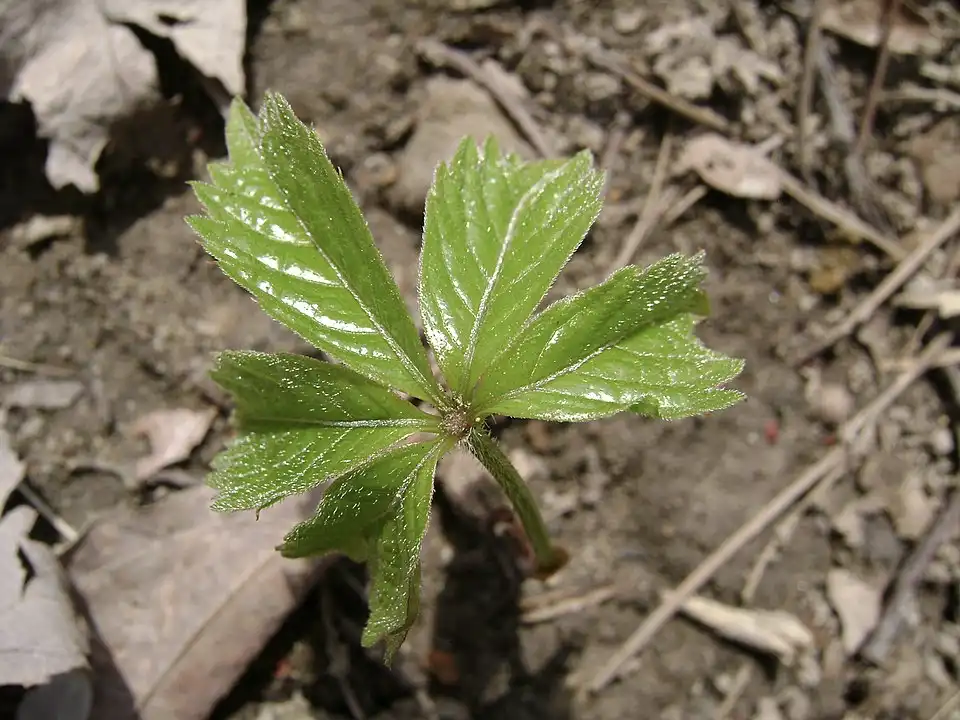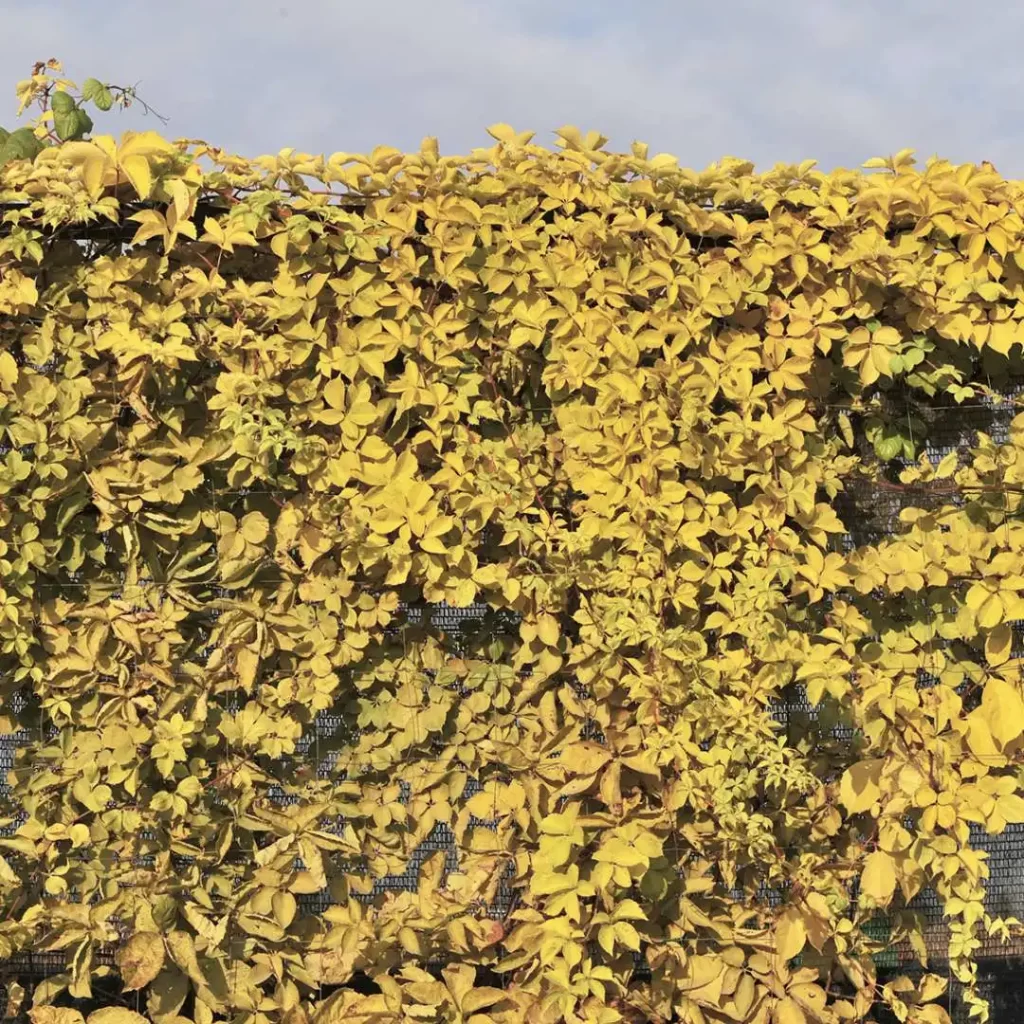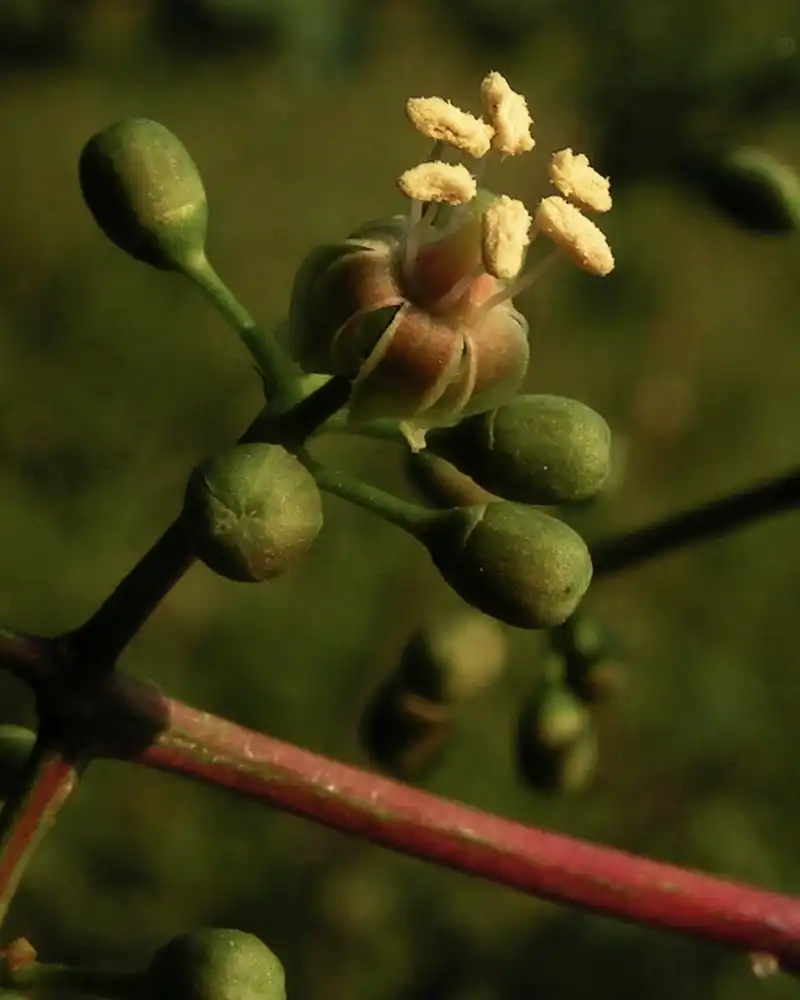Virginia Creeper, also called Parthenocissus Quinquefolia, is a plant from North America. It loses leaves in the fall and grows woody every year. This popular climbing plant is known for its green leaves and bright red autumn color. Many people like it in their gardens or homes because it grows quickly, looks nice, and adds beauty to the landscapes. Even though Virginia Creepers are used a lot, worries about them being poisonous continue. In this article, we will look into the real story of Virginia Creepers and if they are dangerous to people or pets.
Botanical Overview:
Virginia Creepers are plants that lose their leaves yearly and grow like vines. They come from North America. You can recognize them by their bright green leaves, which turn into a strong red color in the fall. These plants are valued for looking nice and they rapidly cover fences, walls, and arbors with vines. But, some mix-ups happen because they look like another plant called poison ivy.
Important Facts about Virginia Creeper:
Some important facts about Virginia Creeper are here:
Leaves:
Virginia creeper has many leaves with five parts that look like a hand’s palm. In the fall, its leaves turn bright red.

Habitat:
It does well in different places like forests, fields, and areas that have been disrupted. You often see it climbing trees or buildings.
Berries:
The plant makes little, dark-blue berries in the late summer. Birds like these but people can’t eat them because they are dangerous.

Climbing Mechanism:
Virginia Creeper uses sticky pads on the end of its string-like parts. This lets it hang onto things like walls or tree trunks easily.
Invasive Potential:
Virginia creeper is praised for its pretty look, but in some areas, it can be a problem. It grows very fast and takes over the space of plants that are native to those regions.
Wildlife Benefits:
Even though the berries can be bothersome, they give food to birds. Also, their thick growth makes places to live and hide in nature safer for animals.
Tolerant to Conditions:
It is good on many ground types and can handle both sun and shadow. This makes it useful for making gardens or lawns.
Not Poison Ivy:
People often mix up Virginia creeper with poison ivy, but it’s safe and doesn’t make your skin hurt like poison ivy does.
Pruning:
You might need to cut it often so its growth stays in check, especially if planted near buildings or small areas.
Landscaping Use:
Virginia creeper is often used for putting on walls, fences, or arbors to give a lot of green cover. It’s especially good in places with lots of space up and down.

Distinguishing Virginia Creepers from Poison Ivy:
One of the main reasons people get confused about Virginia Creepers is because they look a lot like poison ivy. Both types of plants have leaves with three pieces that join together, making it hard for people who don’t know much about plants. Remember, Virginia Creepers do not have the urushiol oil found in poison ivy. This is what causes skin problems for people.
Toxicity:
Unlike what many people think, Virginia Creepers are usually not seen as harmful to humans or animals. Virginia Creeper leaves and berries have things called oxalates. If you eat them, they can cause a bit of discomfort. But, bad health effects are rare. Most times they cause small problems like an upset stomach.
Potential Allergic Reactions:
Although Virginia Creepers are not naturally harmful, people who have delicate skin or plant allergies might get a bad reaction when they touch them. It’s a good idea to put on gloves when you touch these plants so they don’t cause any problems.
Berries and Wildlife:
Birds eat the berries made by Virginia Creepers because they need food. Birds eat the berries and it doesn’t hurt them. This helps to spread seeds everywhere. This shows even more how safe the plant is in nature’s overall system.

Preventive Measures:
To lower the chance of skin problems, it’s a good idea to put on safe clothes like gloves when working with Virginia Creepers. Also, frequently cleaning open skin with soap and water can stop any possible reaction from happening.
Conclusion:
In the end, worries about Virginia Creepers being poisonous are mostly false. These plants are great for decorating yards, they look nice and won’t harm humans or pets too much. But, it’s important to know about possible allergy problems and take action before they happen when using the plant. By learning what makes Virginia Creepers special, we can enjoy their beauty and use them safely in our gardens.



